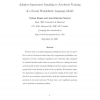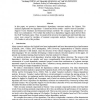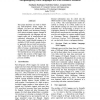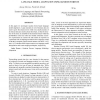223 search results - page 12 / 45 » Domain Adaptation of Maximum Entropy Language Models |
TNN
2008
13 years 7 months ago
2008
Previous work on statistical language modeling has shown that it is possible to train a feed-forward neural network to approximate probabilities over sequences of words, resulting...
NAACL
2003
13 years 9 months ago
2003
In order to boost the translation quality of EBMT based on a small-sized bilingual corpus, we use an out-of-domain bilingual corpus and, in addition, the language model of an indo...
IJCNLP
2004
Springer
14 years 1 months ago
2004
Springer
In this paper, we present a deterministic dependency structure analyzer for Chinese. This analyzer implements two algorithms – Yamada and Nivre models – and two sorts of class...
ACL
2007
13 years 9 months ago
2007
This paper describes our work on building Part-of-Speech (POS) tagger for Bengali. We have use Hidden Markov Model (HMM) and Maximum Entropy (ME) based stochastic taggers. Bengali...
ICASSP
2010
IEEE
13 years 8 months ago
2010
IEEE
In this paper we investigate random forest based language model adaptation. Large amounts of out-of-domain data are used to grow the decision trees while very small amounts of in-...




